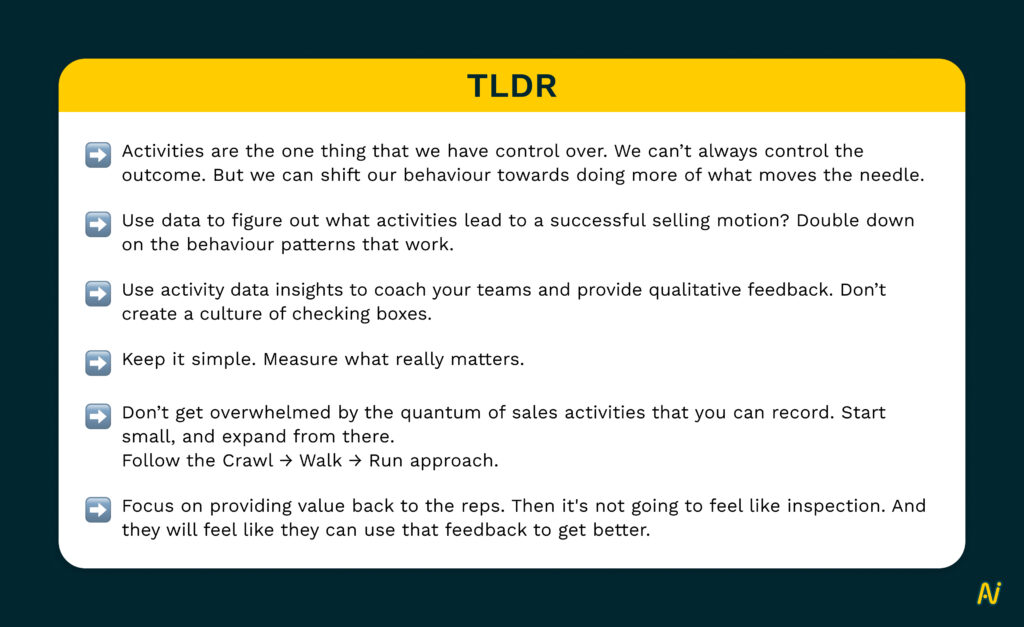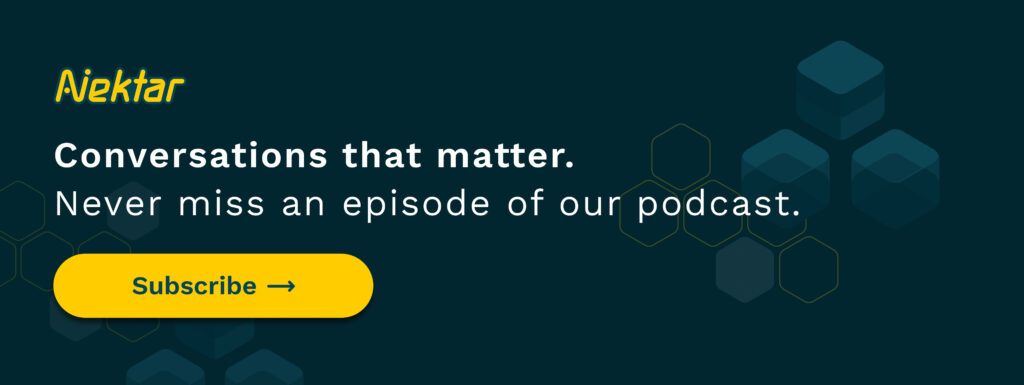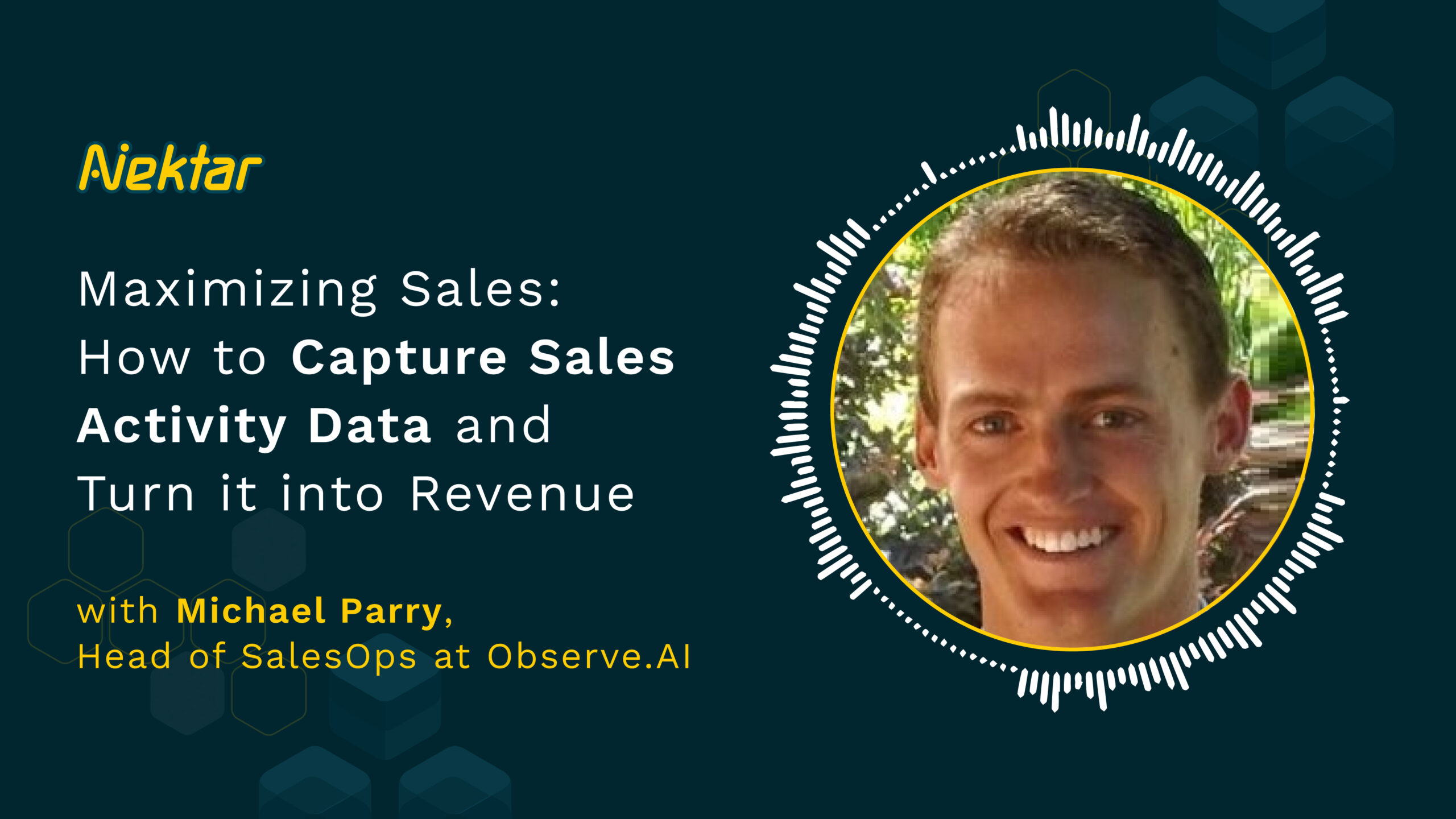Michael Parry, Head of SalesOps at Observe.AI recently spoke to Abhijeet Vijayvergiya about the common thread that runs between improving athletes performance and getting reps to close more deals. He also shared his perspective on how revenue leaders can use the power of activity data to create more productive sales teams, and eventually win more deals.
Let’s dive in.
There are a lot of parallels constantly drawn between the world of sports and sales. So we went ahead and asked someone who has done both. Michael Parry is a former sports scientist from UC Berkeley who now heads sales operations at Observe.AI.
In this interview, Michael reveals what’s common among the two worlds when it comes to continuous performance improvement. It’s about tracking performance to the T, looking at patterns in activities done, learning from them, and continuously iterating behaviour to reach goals.
Read on to know what Michael has to say about being humble in sales, being open to continuous improvement despite one’s background, and paying heed to coaching on the right areas revealed by your data.
If you’re short on time, here is a quick summary of the conversation.

If you enjoy our discussion, check out more episodes of our podcast. You can follow on iTunes, Spotify, YouTube or grab the RSS feed in your player of choice. What follows is a lightly edited transcript of the episode.
Common Thread Running Between Sports Science & SalesOps
Abhijeet: Michael, I absolutely love your journey for two reasons. First, you’ve got a background in sports, which is amazing. I personally am a big believer in drawing parallels between sports and sales. They go hand in hand. There are a lot of best practices and principles from sports and sports management that can be used in sales and sales management.
The second thing that I liked about your journey is that you were an SDR. You were a user, you went through the grind, and you used a system. And then you became a SalesOps professional where you could have user empathy as well when you design and configure the CRM and scale out the tech stack.
So tell us a little bit about the sports performance management experience. You were a high performance sports scientist at UC Berkeley. So from driving high performance for your team there to driving high performance out of your reps as Head of SalesOp, what are the parallels that one can compare?
Michael: I was a sports scientist at UC Berkeley. At that time, they were building a high performance program. We were basically using science to try and predict and help the athletes recover. And so basically what I was doing was a lot of heart rate testing, and also I would test their IGA, which is an immunoglobulin, and tends to spike from stress. So it’s not only good stress in terms of – we just had a really hard workout, but also – my dog died or my boyfriend broke up with me, or whatever the case may be.
Stress that can lead to poor performance. So we were trying to use data and science to optimize the kind of the recovery, which then leads to better performance. Which is kind of the same thing we’re doing in sales and RevOps. How to use the data to impact performance and help coach your AEs, SDRs and teammates.
Michael parry
Abhijeet: I think the power of leading indicators, one use case where you’re driving sports performance and one use case when you’re driving revenue efficiency, which is the need of the hour, especially looking at the current market conditions.
You talked about tracking activities or tracking these leading indicators. How do you think this helps in improving seller productivity and accelerating revenue?
Michael: That’s a good question. I think when it comes down to it, the activity that we do every day is the one thing that’s in our control. We can’t always control the outcome. Working a deal and the budget gets cut at the last minute, the company gets acquired, and the deal goes sideways. We can’t control all those external factors.
But at the end of the day, it’s what we are doing on a daily or weekly basis. And what are those activities that lead to a successful selling motion? Or give us the best chance to ultimately win that deal, which is what we want to do.
Don’t Just Report the News. Make it.
Abhijeet: So there is a Gartner survey that I read that mentioned that 68% of sellers often find themselves merely going through the motions to meet activity tracking requirements. So unless activity tracking is meaningful, it just ends up wasting precious time that could have been utilized elsewhere.
So how do you suggest moving tracking activities as just a check-the-box exercise to actually adding meaningful value to a seller’s time?
Michael: I think at the end of the day you have to complete the circle. You have to provide the feedback, so it’s not just checking the box and moving on.
I had a mentor early on who talked about reporting the news versus making the news. And us as SalesOps leaders or frontline managers, when we’re working with AEs or SDRs, it’s not just about whether they do the exercise. It’s more about how do we coach them, or use those results as coaching opportunities to help them improve, help them build more skills. So it’s not just a meeting or an inspection. It’s that coaching opportunity.
Michael Parry
I think it is hard work because as managers and SalesOps people, we get pulled in tons of directions. So it’s something we just need to commit to and then recommit to all the time.
As a quick example, if you’re looking at activity on a specific deal and it’s like – I need to get higher, or I need to get to the economic buyer. Well, yes, that’s true, but that’s kind of obvious, right? We all want to be talking to the higher people that make the decisions. But the conversation really needs to be more around – How can I help you do that? What activity can I do to help you get there or accomplish the goal? I think that’s really where the conversation needs to go, so it doesn’t feel like a check the box exercise, but it’s more of a coaching and getting better exercise.
michael parry
Track the Right Activity Metrics
Abhijeet: What are the top activity metrics that you’d advise SalesOps people out there to start tracking to see how productive their team is?
Michael: I’m a big fan of keeping it simple. We can measure everything in the world and there’s a lot of potential noise out there. I think Mike Weinberg does a pretty good job of this. What does an AE do? He creates advances and closes opportunities.
But on the activity side of it, for AEs, we’re really looking at more leading indicators. What new opportunities are created? And how many first meetings have they had in a given week or month? And then you start drilling down from there.
michael parry
So if we see, hey, did the guy or girl in the northeast have a lot of activity, then great. And we can dive in there in terms of what they are doing right. What are those activities? Where are they putting their time to get those results?
And then, on the flip side, we see someone not creating opportunities. Let’s dive in there. What activity are they doing? Or maybe they’re not doing right and diving into it. Not only to understand if there is a messaging problem, like are they active and they just are not getting the results or are they just not active. And the latter is obviously a separate conversation.
So really keeping it simple. And then I think that for an SDR it’s the same thing. We aim our SDRs on qualified meetings, and the only way you get qualified meetings is if you have connections, right? And the only way you have connections is, you start peeling back the onion. Like connections back to calls or emails or again, what’s kind of your cadences? How often are you touching people? I guess I’ll say those lagging indicators of qualified meetings and stuff happen from the kind of daily activity that we’re doing. So keeping a pulse on that.
Abhijeet: Would you be able to share some examples from your experience across different companies you have worked with on how tracking these activities and these conversations have helped progress your colleagues or or other team that you coached?
Michael: Yes, sure thing. So again, I think it comes back to completing that loop. So one of the things we’re doing now that actually we didn’t do at my prior companies is taking these recorded calls or taking some of the meetings and having the entire team watch it and then provide feedback. What went well, what didn’t work well, what could have improved? I think that peer to peer learning is key, and then again, it turns into less of an inspection point and more of a coaching or a learning opportunity, right?
I think about just how many initiatives get rolled out and then they don’t get followed up on. So there’s no accountability, in which case the reps just feel like – I’m just doing all this, that’s when it feels like the check to box. So that’s one thing that’s really worked well.
michael parry
The last quarter that we started to roll this out is just doing some of this peer-to-peer stuff. All of our managers also watch the videos, so they start to pull out points on their one on ones. Just in, again, in terms of some of the key sales skills, right?
Like how are we developing the champion? How are we influencing decision criteria? Some of those kinds of basic sales skills that we just need to continue to improve.
Start Automating With the Crawl -> Walk -> Run Approach
Abhijeet: I think the big problem that a lot of automations run into is how to capture all activities. A lot of time reps don’t want to log activities. They’re also communicating on different channels. They might be using an email channel with some prospects, they might be using LinkedIn, they might be using phone calls, they might be leaving voicemails. They might be meeting in person as well.
So there are activities happening across multiple channels and this whole digital communication load has increased many folds in the last four to five years. So how can an automation set up an activity capture or activity tracking program across their sales?
Michael: There’s definitely challenges to it, right? There’s more and more data, more and more platforms to use. I guess I’d say start small. Follow the Crawl, Walk, Run approach. So start with one use case, and that’s kind of what we started here. We started just capturing their emails and meetings.
So start there. And yes, we’re missing out on the phone calls that they make on their cell phones and the text messages that they do. But we are capturing the vast majority of that, and we have expanded into actually recording the meetings that they hold. So that’s kind of where we’re at now.I think that gets us the vast majority of the activity that our AEs are doing, and then you can continue to evolve from there.
Don’t Just Be Big Brother
Abhijeet: As a business, you have all the right to capture business communication data, which is part of your organization and your customers. But from a comfort standpoint, a lot of sales people might not be okay with this. And they might feel like they’re getting micromanaged or they’re constantly getting monitored.
How do you advise organizations and SalesOps managers to convince the users to be okay with this? And how can that be converted into an opportunity to convince them about the value of doing this?
If we make the parallel back to sports, Roger Federer, Nadal, you know, the best athletes in the world across all sports, they’re reviewing their performance. They all have coaches, lots of coaches typically. They’re watching video, They’re getting feedback. So I think that needs to be the mindset. That’s how we rolled it out here in terms of – “Listen, these guys are the best in the world. If they can continue to improve and take feedback, then so can we.” As sales professionals and just people trying to get better every day. So I think that being number one, right.
michael parry
I’ve had this one sales leader tell me once that – “I know these guys are experienced enterprise sellers. I don’t think we’re going to record their calls.” And I used that analogy with them back to the sports. You know, the best athletes in the world, they all review calls, right? We all can get better every day. That seemed to resonate and kind of shift the mindset from the way we’ve done it.
I think the second thing is, yes, it’s going to be Big Brother and an inspection point, if that’s how we use the data. In terms of how many activities did you have this week? And if that’s the only value that we get out of, then it’s going to feel like that. If we can again shift, which is, you know, difficult to do in terms of we all get pulled in so many directions, but if we really block off our calendars, block off one hour a week, right?
Maybe it starts at one hour a week and just say, “Hey, I’m going to review a call as a coaching opportunity.” So it’s not an inspection point. It’s a way for me to add value to my reps, and like I said, back to focusing on some of the core skills.
Did I develop my champion? Did I ask open-ended questions? Did I influence decision criteria? Did I find enough pain there?
For some of these basic sales skills, can I focus on that and provide value back to my reps? Then it’s not going to feel like inspection. Then they’re going to see that it’s going to help them get better and improve their skills from there.
Abhijeet: I also saw a few studies which talk about the positive impact of coaching on revenue generation. A lot of companies that provide quality coaching have seen an increase in annual revenues between 7% to 10%. In your experience, I’d love to know if you have seen something similar?
Michael: Yes, probably difficult to measure, but I don’t doubt that metric at all. We just started some of these coaching sessions and again, focusing more now that we’re recording some of the actual Zoom meetings and doing some of these peer to peer feedback, right? So we’ll see kind of where that goes on the overall.
But in terms of the metric you just pointed out, I think when it comes to just overall, how are we forecasting and feeling about a deal. I think that’s where we’ve seen a lot of these activities. That’s the first example that came to mind in terms of the deal we’re working on. But if we look at the activity of what’s happened, both what’s happened on our side, our outreach, but also what’s come back from the customer, right? And how are they interacting with us?
You actually want to see more movement in the deal price and stuff like that, because at least that meant the customer was engaged. We were having some dialogue so that indicated that things were on the right track. And I think that’s the same thing where we see the activity stuff as we come up with a strategy for forecasting and closing the deal is just how that activity looks from the customer and us.
Getting Futuristic About Sales Productivity
Abhijeet: What would be the future of sales productivity according to you?
Michael: I think we’ll obviously see software continuing to evolve and get better. They will provide not just the data, but better insights around coaching and connecting all the various activities across the platforms.
And then also connecting how the person you’re trying to connect with likes to do business, right? I’m sure we’ve all taken those kinds of personality tests. There’s stuff similar to that. But just like me personally, will I respond?
If I know the person’s done their homework, if they’re trying to add value, I will respond. I won’t respond to just generic stuff.
michael parry
And then the other thing, like I’m pretty detail oriented, so if there’s a spelling mistake in an email like that, I get fixated on that and it’s like, I can’t move off of that, right? But there’s just certain things that you can give like when I reach out to a prospect, he likes to be connected with like this, right? I mean, I think we’ll start to see stuff pop up that will connect those two dots to provide the SDRs or AEs insights into how to better outreach.
Abhijeet: I think these are very interesting applications of how AI can be leveraged. Thanks for joining us, Michael. It was lovely having you and thanks for the candid chat.
Michael: Thanks for the invite! Take care.








